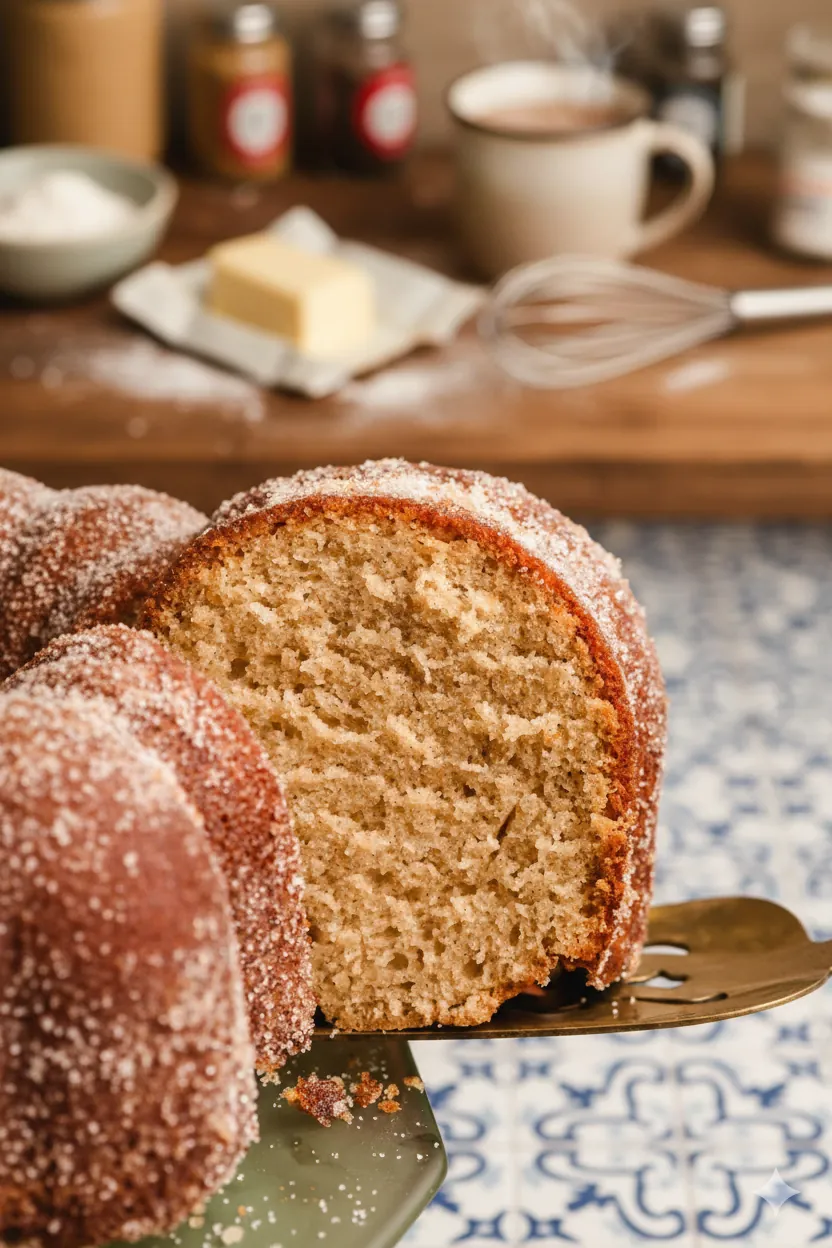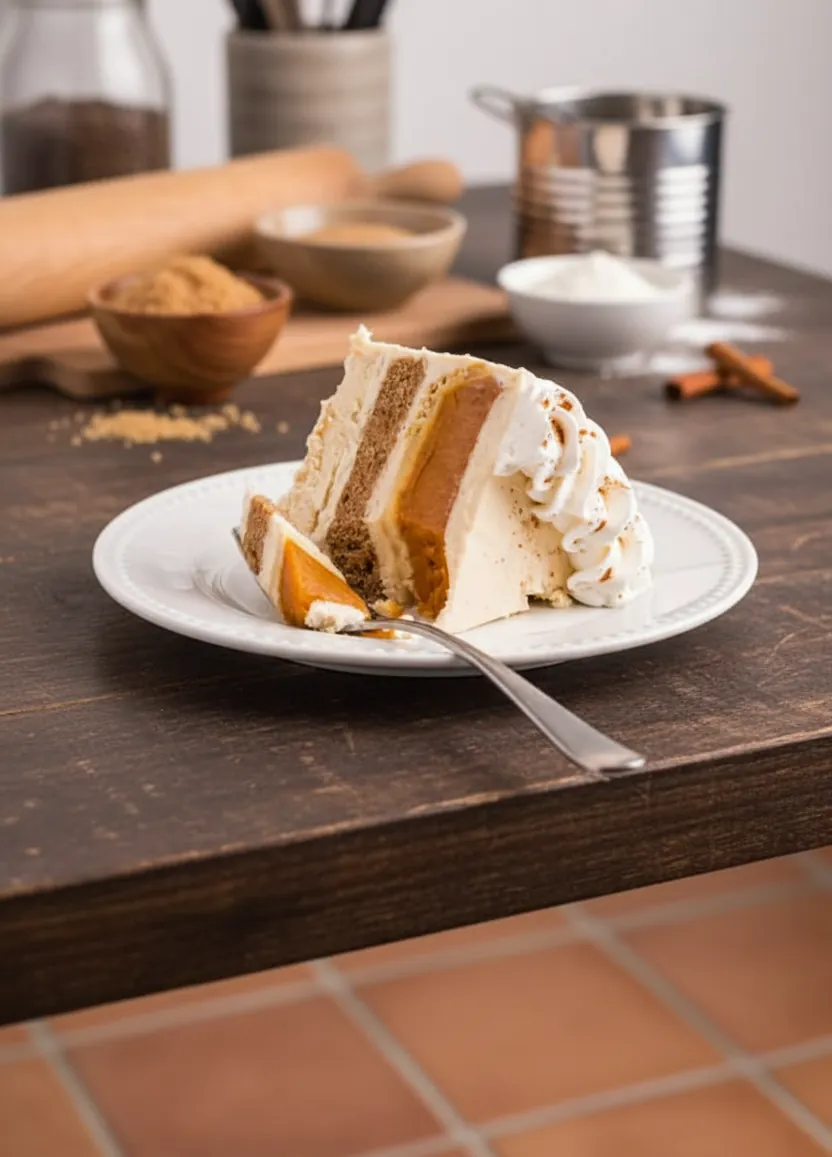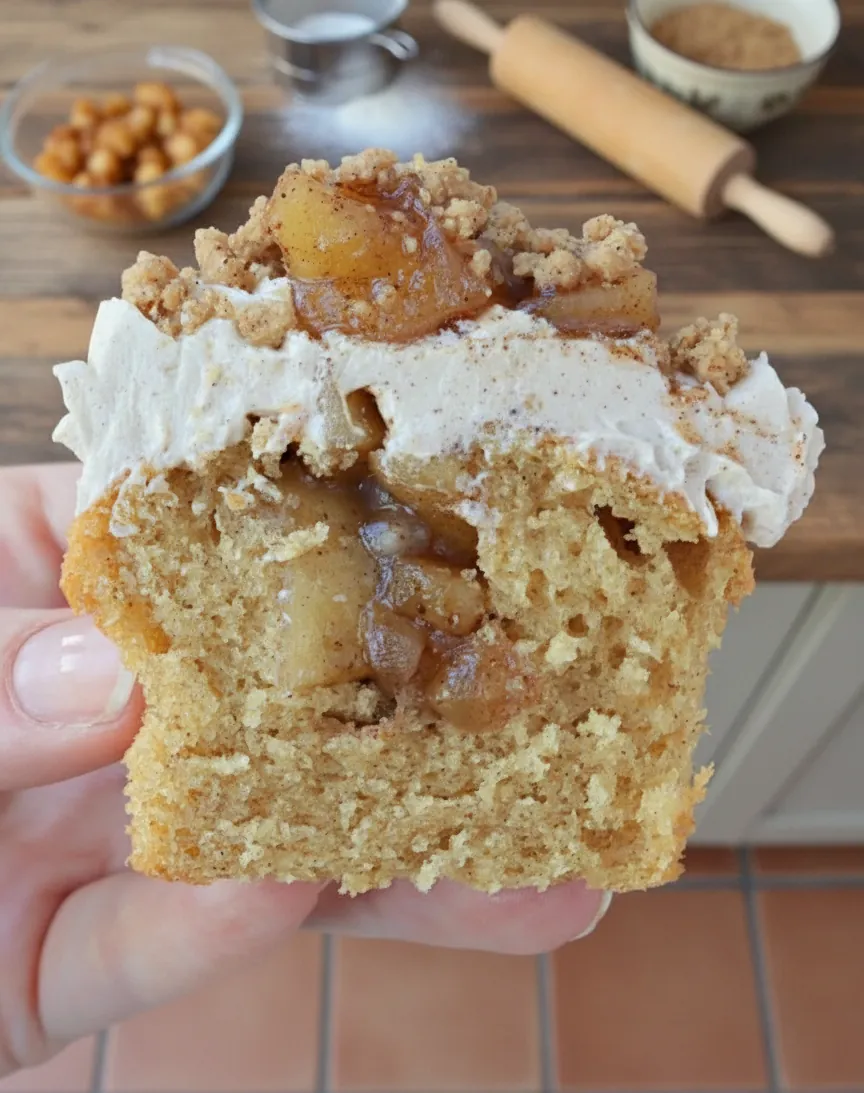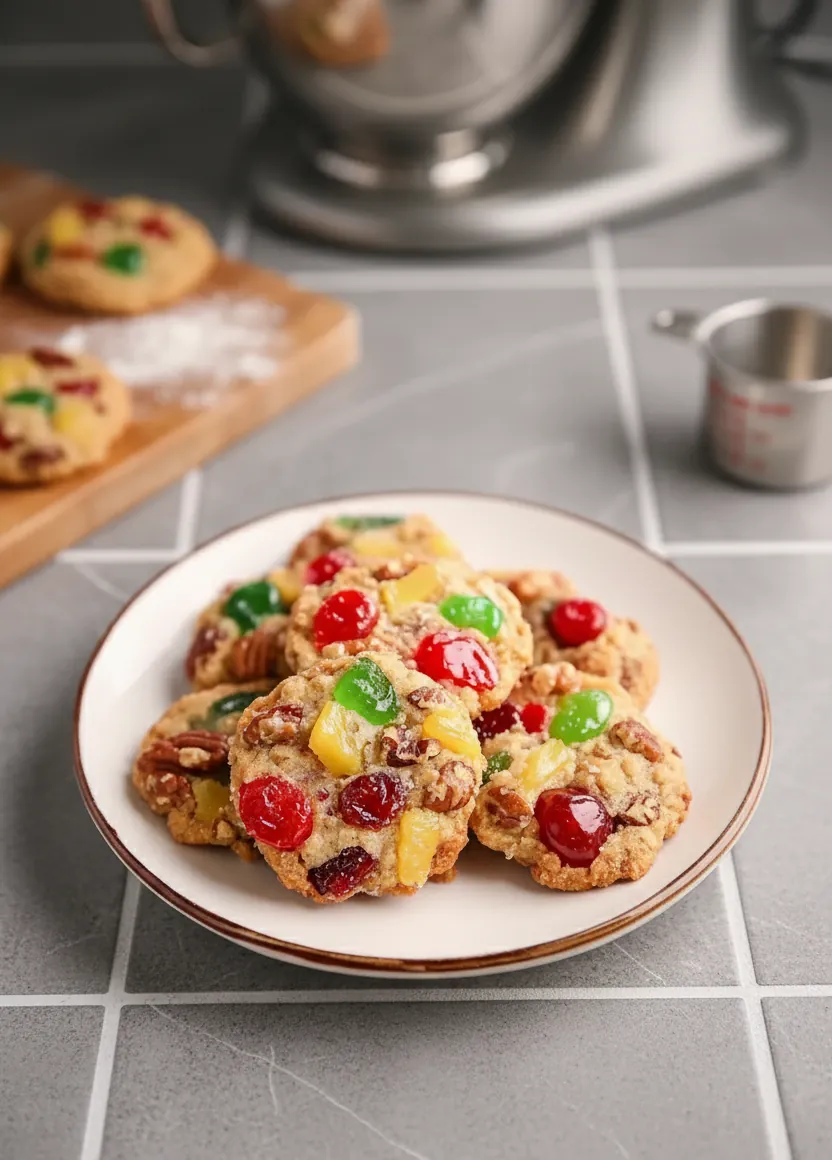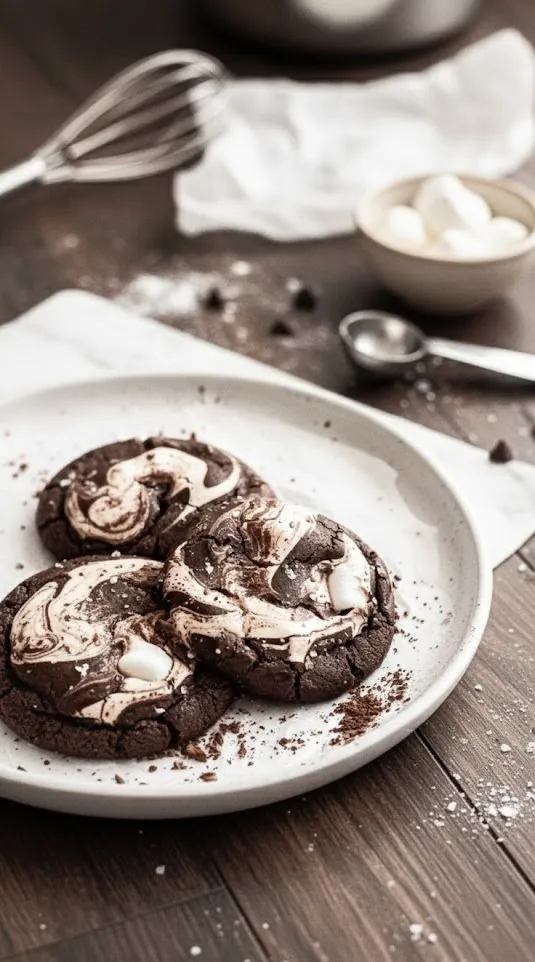Intro
Apple cider cake tastes like fall in every bite. The warm scent of cinnamon, the richness of brown sugar, and the deep flavor of apple cider fill your kitchen as it bakes. It is the kind of cake that brings people into the room before it even comes out of the oven. More than a dessert, it feels like a tradition waiting to happen.
In this article, you will discover what makes this cake stand out from other apple desserts. You will also learn the ingredients that create its bold flavor, how to make it at home, and how to serve and store it so it stays soft and fresh.
Apple Cider Cake and the Taste of Fall
Why Apple Cider Cake Feels Like Autumn in a Bite
There are few things more comforting than a slice of apple cider cake. It brings together the familiar flavors of the season and turns them into something warm and satisfying. The key is the apple cider. As it cooks down, it becomes thick and rich, adding a bold apple flavor that runs through every part of the cake.
The spices are simple and classic. Cinnamon, nutmeg, and a touch of brown sugar create a flavor that is deep without being too sweet. The result is a cake that smells as good as it tastes. It is soft, moist, and rich enough to stand on its own without icing, though the cider glaze and sugar coating make it even better.
This cake is not fussy. It holds up well after baking and reheats easily. Whether served at a fall gathering or enjoyed with a cup of tea, it always fits the moment.
The Difference Between Apple Cake and Apple Cider Cake
At first glance, apple cake and apple cider cake might seem the same. But they are made differently, and they offer two very different textures. Apple cake usually includes chopped apples in the batter. It is a dense, moist dessert with visible pieces of fruit throughout each slice.
Apple cider cake, by contrast, does not use chopped fruit. Instead, it relies on reduced apple cider for flavor and moisture. The texture is finer, the crumb is tighter, and the flavor is more evenly spread. You get a consistent apple taste from edge to center without biting into fruit pieces.
Both cakes are perfect for fall. But if you are looking for something smooth, spiced, and bakery-style, apple cider cake delivers.
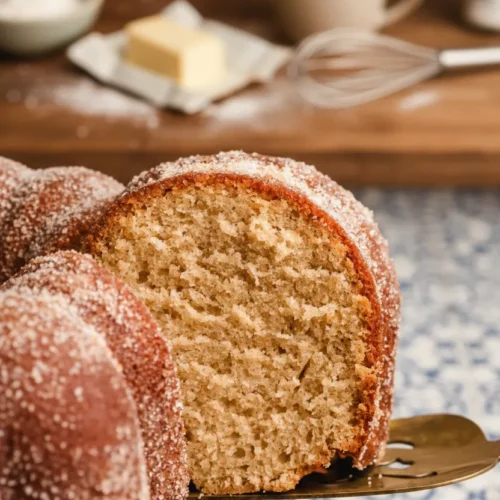
Apple Cider Donut Cake
Equipment
- Baker’s Joy No-Stick Baking Spray
- Stainless Steel Cooling Racks, Half Sheet
- KitchenAid 5 Quart Tilt-Head Stand Mixer
- Nordic Ware Original Bundt Pan, 12 Cup
Ingredients
- 3 ½ cups all purpose flour
- 2 ½ teaspoons baking powder
- 1 ¼ teaspoons salt
- 2 teaspoons cinnamon
- 1 teaspoon nutmeg
- 2 ½ sticks unsalted butter at room temperature (20 Tablespoons, 1 ¼ cups )
- 1 ½ cups brown sugar
- ½ cup granulated sugar
- 4 eggs at room temperature
- 2 teaspoons vanilla extract
- 1 cup apple cider
- For the coating:
- 2 cups apple cider
- 2 Tablespoons salted butter
- ⅓ cup granulated sugar
- 2 Tablespoons demerara or turbinado sugar
- 1 ½ teaspoons cinnamon
Instructions
- Heat oven to 350 degrees. Grease a 12 cup bundt pan with Baker’s Joy or another non-stick spray with flour.
- In a medium mixing bowl, whisk together flour, baking powder, salt, cinnamon, and nutmeg. Set aside.
- In the bowl of a stand mixer, beat together the butter, brown sugar, and sugar on medium speed until lighter in color and fluffy, scraping the bowl occasionally. This will take 3-5 minutes (really, that long!).
- Add the eggs, one at a time, beating well and scraping the bowl after each addition. Beat in the vanilla extract.
- Add the flour mixture in three additions, mixing on low speed until incorporated. With the mixer running on the lowest speed, add the cider in a slow stream, and mix until combined. Scrape the bowl well to make sure the batter is fully incorporated.
- Scrape the batter into the prepared bundt pan and bake for 40-50 minutes, or until the edges are golden brown and a toothpick inserted in the center of the cake comes out clean. Allow to cool for 10 minutes before inverting onto a plate.
- While the cake is baking, add the 2 cups of cider to a small saucepan over high heat. Bring the cider to a boil, then reduce heat to a low boil and continue to cook, stirring every 10 minutes or so, for about 30 minutes, or until it’s thickened and reduced to around ⅓ cup. Stir in the butter until melted.
- In a bowl whisk together the sugars and cinnamon. While the cake is still warm, brush the cider mixture all over the outside. Sprinkle the top with sugar, then use the palm of your hand to press additional sugar onto the sides. Serve warm or at room temperature.
Notes
Inside the Apple Cider Cake – Flavor and Form
The Role of Brown Sugar, Spices, and Cider Reduction
The ingredients in apple cider cake may seem simple, but each one has a clear purpose. Brown sugar brings more than sweetness. It adds moisture and a deeper, almost caramel-like flavor that white sugar alone cannot provide. Combined with granulated sugar, the cake has just the right balance of light and rich notes.
The spices are what make this cake feel seasonal. Cinnamon is bold, familiar, and warm. Nutmeg adds a softer, earthier layer. Together, they complement the apple cider without overpowering it.
The most important ingredient is the cider itself. When you reduce apple cider, you create a thick, concentrated liquid with intense flavor. That reduction is what makes this cake stand out. Instead of a mild apple taste, you get something strong and noticeable in every bite. Reducing the cider also means the cake stays moist but never soggy. It becomes a strong base for the other ingredients to build on.
Why a Bundt Pan is the Best Choice
The choice of pan is not just about shape. A bundt pan creates more surface area, which helps the cake bake evenly. The center opening allows heat to reach the middle of the batter so the cake cooks through without drying out at the edges. It also gives the cake a distinct, elegant look with natural ridges that hold onto the cider glaze and sugar topping.
Using a 12-cup bundt pan makes this recipe easy to handle. The cake slips out in one solid piece when the pan is greased properly, and the curved shape makes each slice look like something you would see at a bakery.
More than appearance, the bundt pan helps the flavor shine. The glaze you brush on after baking can settle into the grooves, and the sugar coating sticks better, adding a light crunch to every slice.
How to Make the Perfect Apple Cider Cake
Essential Equipment and Baking Tips
Making apple cider cake at home is simple when you have the right tools. The most important item is a 12-cup bundt pan. Choose one with a solid, non-stick finish and defined curves to hold the sugar coating. Grease it thoroughly with a non-stick baking spray that contains flour. This helps prevent sticking and keeps the cake’s shape perfect when removed from the pan.
A stand mixer is also helpful. Creaming the butter and sugars takes several minutes. A mixer keeps the process smooth and makes sure the texture turns light and fluffy. If you do not have one, a hand mixer will also work with a little extra time.
Use a rubber spatula or flexible scraper to keep the batter mixed evenly. Scraping the sides of the bowl while mixing ensures that no butter or flour sticks to the edge.
Always bring your butter and eggs to room temperature before starting. Cold ingredients can cause the batter to split or bake unevenly. This small step makes a big difference in texture.
When adding the dry ingredients and cider, go slowly. Mix only until combined. Overmixing can make the cake tough instead of tender.
Tips for Getting the Cider Reduction Just Right
Reducing apple cider is the most important step in this recipe. Start with two cups of real apple cider in a small saucepan. Use high heat to bring it to a strong boil. Once boiling, turn it down to a low boil and let it simmer for about thirty minutes.
Stir the cider every ten minutes to prevent scorching. You want to end with about one third of a cup. The reduction should be thick enough to coat a spoon but not syrupy like caramel. It should pour easily and feel warm and rich, not sticky.
Once reduced, stir in a small amount of butter until melted. This makes the glaze smoother and helps it soak into the cake more evenly. The final mixture should be warm, glossy, and pourable.
Brush the warm reduction onto the cake while it is still fresh from the oven. This allows the glaze to sink into the crumb and gives the sugar coating something to stick to. Do not wait too long. If the cake cools too much, the glaze will sit on top instead of soaking in.
Serving, Storing, and Flavor Variations
How to Serve Apple Cider Cake Warm and Fresh
Apple cider cake is best when served slightly warm. The texture is soft, and the flavors are more pronounced. After baking, allow the cake to cool in the pan for ten minutes before inverting it onto a plate. From there, you can serve it fresh or let it rest until you are ready.
If you are serving it later, warm individual slices in the microwave for fifteen to twenty seconds. This quick heat brings the cider glaze back to life and softens the crumb. It pairs beautifully with a spoonful of whipped cream or a scoop of vanilla ice cream.
To make your presentation stand out, you can dust the top of the cake lightly with extra cinnamon sugar just before serving. This simple touch adds texture and makes the cake look fresh out of the oven.
Apple cider cake works well for gatherings. It holds its shape, slices cleanly, and fills the room with a warm, inviting aroma.
Ideas to Make It Your Own
This recipe is flexible. Once you master the base, there are many ways to add your own twist. A handful of chopped toasted pecans stirred into the batter adds crunch and a nutty flavor that balances the sweetness. You can also mix in finely chopped dried apples for a more traditional texture.
If you want a stronger finish, drizzle a brown butter glaze over the top instead of the cider reduction. Brown butter adds richness and depth that pairs well with the spice blend.
The batter can also be used to make mini bundt cakes or cupcakes. Adjust the baking time to fit the smaller pans and keep a close eye near the end to avoid overbaking.
Whether you stay classic or get creative, apple cider cake provides a solid foundation that always tastes like fall.
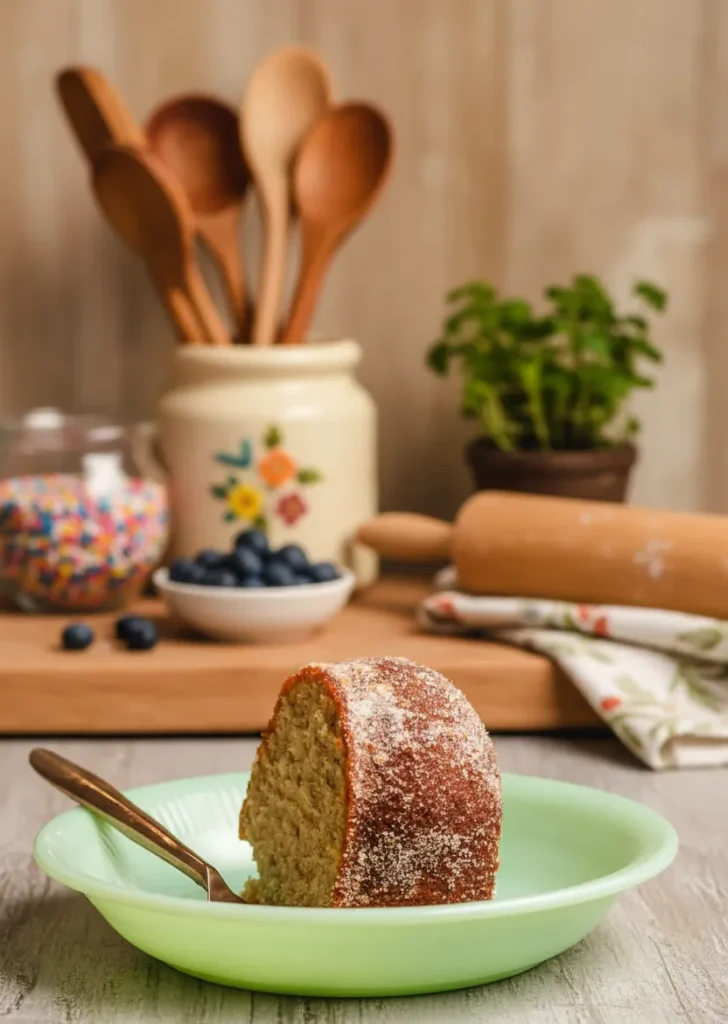
Frequently Asked Questions
What is the difference between apple cake and apple cider cake?
Apple cake usually contains chunks of apples, which create a moist but chunky texture. Apple cider cake uses reduced apple cider for flavor and moisture, resulting in a smoother, tighter crumb with a more even apple taste throughout.
Can I use store-bought apple cider for this cake?
Yes, store-bought apple cider works well. Choose a variety that is unsweetened or lightly sweetened to avoid making the cake overly sugary. Avoid apple juice, which is filtered and lacks the rich flavor of cider.
How do I reduce apple cider for baking?
Pour apple cider into a saucepan and bring it to a boil. Lower the heat to a simmer and cook it for about thirty minutes, stirring occasionally, until it reduces to about one third of a cup. The result should be thick and slightly syrupy.
How should I store leftover apple cider cake?
Wrap the cake tightly in plastic wrap or place it in an airtight container. Keep it at room temperature for up to three days. For longer storage, refrigerate it and reheat slices in the microwave before serving.
Conclusion
Apple cider cake is one of those recipes that becomes a favorite from the first try. It is full of warm spices, rich apple flavor, and a soft texture that stays fresh for days. Whether you enjoy it on a quiet morning or serve it at a fall gathering, it delivers comfort and flavor in every slice. With just a few ingredients and the right steps, this simple cake becomes something special. It is a dessert that brings people together and fills the room with the scent of the season.
